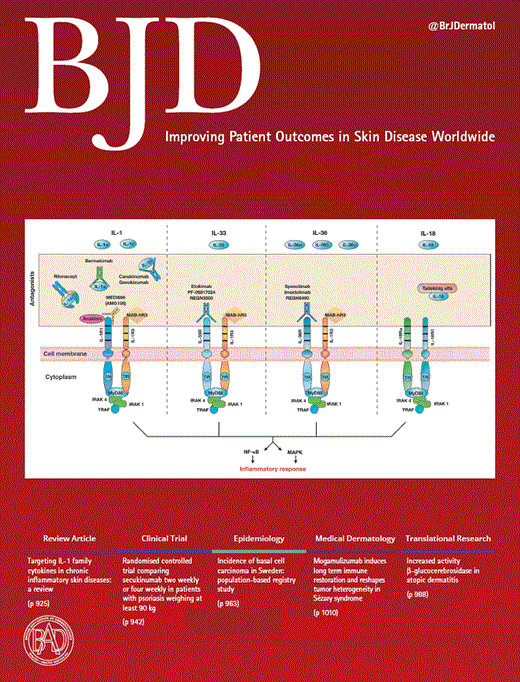-
Views
-
Cite
Cite
AARNE OIKARINEN, EEVA‐RIITTA SAVOLAINEN, KARL TRYGGVASON, JEAN MICHEL FOIDART, URPO KIISTALA, Basement membrane components and galactosylhydroxylysyl glucosyltransferase in suction blisters of human skin, British Journal of Dermatology, Volume 106, Issue 3, 1 March 1982, Pages 257–266, https://doi.org/10.1111/j.1365-2133.1982.tb01721.x
Close - Share Icon Share
SUMMARY
Basement membrane components and collagen biosynthesis were studied in suction blisters in human skin. The basement membrane components were characterized by immunofluorescence using specific antibodies to type IV collagen, laminin and fibronectin, and collagen biosynthesis was studied by assaying galactosylhydroxylysyl glucosyltransferase.
In suction blisters, the separation of epidermis and dermis occurred above the lamina lucida, indicating that the basement membrane, composed of lamina lucida and lamina dcnsa, forms a mechanically strong entity. During the regeneration phase of blisters, type IV collagen and laminin were not observed in the old epidermal blister roof. This indicates that keratinocytes when separated from the underlying basement membrane or connective tissue do not synthesize laminin or type IV collagen.
GalactosylhydroxylysyJ glucosyltransferase activity could be demonstrated in blister fluid and was about the same as in serum when expressed on the basis of protein in fresh blisters. It increased by 2–3 fold during the repair of blisters, indicating that there was local production of this enzyme. Further studies revealed that pure epidermis contained galactosylhydroxylysyl glucosyltransferase and hydroxyproline and this suggests that epidermis may synthesize some collagen type which, according to these studies, is not type IV (basement membrane) collagen.





